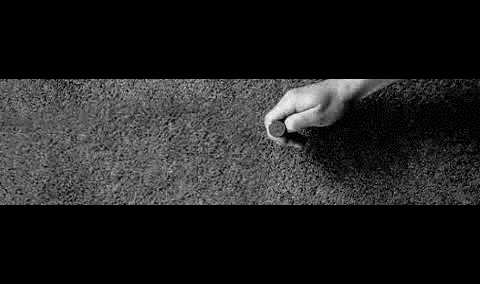Original Problem and Title-I
 I managed to find two perfectly fair coins (don't ask me how, I just did). One of them I gave to my math teacher for Christmas (he was most ecstatic) and the other I kept.
I managed to find two perfectly fair coins (don't ask me how, I just did). One of them I gave to my math teacher for Christmas (he was most ecstatic) and the other I kept.
Next Friday, we played a game. I tossed my coin 876 times (it was a great math lesson!) and my teacher, being rather more patient, flipped it 877 times. I would like to know, what would have been the probability of me tossing less heads than my teacher, as a decimal?
The answer is 0.5.
This section requires Javascript.
You are seeing this because something didn't load right. We suggest you, (a) try
refreshing the page, (b) enabling javascript if it is disabled on your browser and,
finally, (c)
loading the
non-javascript version of this page
. We're sorry about the hassle.
5 solutions
If your teacher flip head 877 times then you have 876 combination of head that less than your teacher. If your teacher flip head 876 times then you have 875 combination of head that less than your teacher. And so on until you only have 1 combination while your teacher had only 2 head.
It give us sum: ( 8 7 6 / 2 ) ∗ ( 1 + 8 7 6 ) (Denote the sum as A.)
While the full combination of 2 coins there are 8 7 6 ∗ 8 7 7 numbers. (Denote this number as B)
So the probability is A / B which is 0.5
If the both of you flip the coin one after another at some point of time even you'll have flipped the coin the same no. of times , you'll will have equal no. of heads and tails. After this there is the 877 the turn and you don't get a chance to flip your coin, so there is 50℅ prob that he will get a head. And so the answer is 0.5.
I trust that you realise that the probability of me getting less heads than my teacher is equal to that of my getting less tails than him. We also know that these events are complementary, for my teacher threw the coin one more time than me, and therefore, he must have had either more tails, or more heads, but not an equal amount of them. The probability must then equal 0 . 5 .
you mean, "complementary", right, not complimentary.
Thanks for your compliments in advance.
Sorry for duplicating your answer, Andrei; when I started writing my solution you hadn't posted your solution yet. Anyway, nice problem. :)
Log in to reply
If you had, nice pace!
Log in to reply
Haha. The next question could involve your teacher having 8 7 8 flips, (or more generally 8 7 6 + k flips for k ≥ 2 ). Then there would be more conditions to consider since he could then come from behind with his last 2 , (or in general k ), flips.
Suppose you and your teacher have both flipped your coins 8 7 6 times. Then your teacher has thrown either a different number of heads than you, (either more or fewer), or the same number of heads as you.
If he has already thrown more heads, then the result of his last toss doesn't matter; he will have tossed more heads than you at the end of the game. If he has tossed fewer heads than you after 8 7 6 flips then the best he can do with his last toss is tie you, and hence can't end up with more heads than you. Now by symmetry the probability that he has tossed more heads than you after 8 7 6 flips is the same as the probability that he has tossed fewer, so given the condition that he has tossed either more or fewer heads than you after 8 7 6 flips, the probability that he will win the game is 2 1 .
Now given the condition that the two of you are tied after 8 7 6 flips, then there is a probability of 2 1 that your teacher will flip a head on his 8 7 7 th toss and win the game.
So since the conditional probability that your teacher has more heads than you at the end of the game is 2 1 in both scenarios, (i.e., a different number of heads after 8 7 6 flips or the same number of heads), the probability that your teacher has more heads at the end of the game is 2 1 = 0 . 5 .